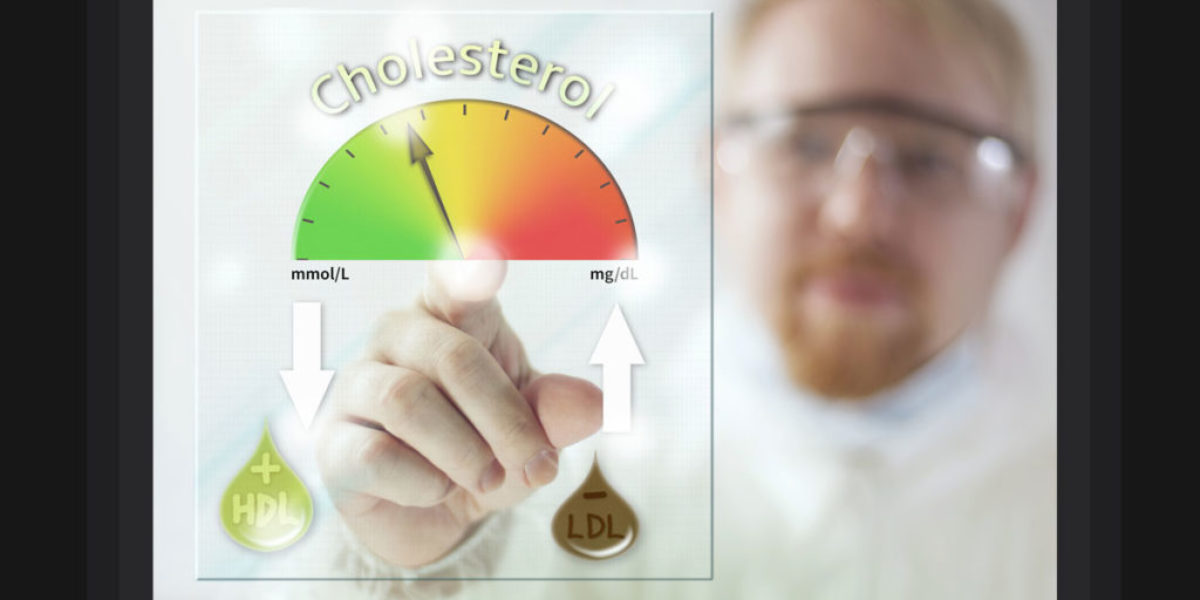High cholesterol may protect against infections and atherosclerosis
Introduction
Many researchers have suggested that the blood lipids play a key role in the immune defence system.1–21 There is also a growing understanding that an inflammatory response of the arterial intima to injury is a crucial step in the genesis of atherosclerosis. and that infections may be one type of such injury.22 These two concepts are difficult to harmonize with the low-density-lipoprotein (LDL) receptor hypothesis, according to which high LDL cholesterol is the most important cause of atherosclerosis. However, the many observations that conflict with the LDL receptor hypothesis, may be explained by the idea that high serum cholesterol and/or high LDL is protective against infection and atherosclerosis.
Laboratory evidence
Lipopolysaccharide, or endotoxin, the main pathogenic factor of Gram-negative bacteria, binds rapidly to lipoproteins,6 mainly LDL,7 and lipoprotein-bound endotoxin is unable to activate the secretion of various cytokines by monocytes in vitro.6,7,10 Also, Staphylococcus aureus α-toxin, a toxin produced by most pathogenic Staphylococcus strains and causing damage to a wide variety of cells, is bound and almost totally inactivated by human serum and purified LDL, as estimated by haemolytic titration.3
Mice with hypercholesterolaemia due to LDL-receptor deficiency, challenged with bacterial endotoxin, had an 8-fold increased LD50, and a significantly lower and delayed mortality after injection with Gram-negative bacteria, compared with control mice.15 Also, rats made hypolipidaemic with 4-aminopyrolo-(3,4-D)pyrimide or estradiol had a greater increase in cytokine levels and markedly increased endotoxin-induced mortality compared to normal rats, and administration of exogenous lipoprotein reduced their mortality substantially.12
In apparent contradiction, is a study of mice infected with Trypanosoma cruzi. These mice developed vasculitis and also atherosclerosis, but the latter was seen only if they were fed a Western-type high-fat diet in addition. However, total serum cholesterol (t-C) did not differ between infected mice fed a conventional diet and infected mice fed the high-fat diet, and t-C was lower in the latter group than in non-infected mice on the high-fat diet who did not develop atherosclerosis, indicating that the development of atherosclerosis was not due to high t-C but to something else associated with the diet.23
High t-C may have other beneficial effects on the immune system, because hypocholesterolaemic men had significantly fewer circulating lymphocytes, total T cells, helper T-cells and CD8+ cells than hypercholesterolaemic men.17 Also, adhesiveness to plastic surface, phagocytic activity and spontaneous motility of mononuclear cells from hypercholesterolaemic individuals were significantly higher compared to controls.8
In acute infections, cholesterol synthesis, measured as degree of 3H-mevalonic acid incorporation into free cholesterol, increases, but the disappearance rate of cholesterol from plasma is also increased,2 probably explaining why t-C may either go up or down in an unpredictable way during the course of various infectious diseases.1
Epidemiological and clinical evidence
Many epidemiological and clinical observations are in accord with the laboratory studies. A meta-analysis of 19 cohort studies including 68 406 deaths, found an inverse correlation between t-C and mortality from respiratory and gastrointestinal diseases, most of which are of an infectious origin. It is unlikely that the low cholesterol was due to these diseases because the associations remained after the exclusion of deaths occurring during the first 5 years.24 Also, in a 15 year follow-up study of more than 120 000 individuals, Iribarren et al. found a strong inverse association between t-C (as determined initially) and the risk of being admitted to hospital due to an infectious disease.20 Statistically significant, inverse associations were found for urinary tract infections, all genitourinary infections and miscellaneous viral infections for women, and for urinary tract infections, musculo-skeletal infections and skin and subcutaneous infections in men. Inverse, but non-significant associations were found for most other infectious diseases. In a similar study of more than 100 000 individuals followed for 15 years, a strong, inverse association was found between t-C and the risk of being admitted to hospital because of pneumonia or influenza, but not for chronic, obstructive pulmonary disease or asthma.18
In a study of 2446 unmarried men with a previous history of sexually transmitted disease or liver disease followed for 14 years, a multivariate-adjusted analysis showed a risk ratio for HIV infection of 1.66 (95%CI 1.07–2.56) in the lowest cholesterol quartile compared with the risk in the second quartile.19 That the low t-C was secondary to HIV is unlikely, because those who became HIV positive during the first four years were excluded from the calculations. In accordance, an inverse association between t-C and the risk of death in AIDS was found in a follow-up of the MRFIT screenees.16
In patients with oedematous chronic heart failure, low t-C predicts impaired perioperative and long-term survival. As such patients show substantial immune activation and have raised plasma concentrations of bacterial lipopolysaccharide, Rachhaus et al. have suggested that high t-C has a protective effect in such patients.21 This may also explain why low t-C predicts mortality in patients with postoperative abdominal infections.14
Patients with chemotherapy-induced neutropenia run a high risk of dying from bacterial infectious disease. In 17 patients who developed neutropenia and fever after chemotherapy, t-C went down by almost 30%. During the infection, t-C was significantly higher in eleven survivors than in six non-survivors and returned to normal. Serum levels of inflammatory cytokines on day 8 after onset were significantly lower, and t-C before onset was also higher among the survivors, although not significantly so.25
In China, where mean t-C is much lower than in the Western world, chronic hepatitis B virus infection is ubiquitous and usually starts in early childhood. Adult chronic carriers of hepatitis B surface antigen, but not individuals with eradicated hepatitis B, have significantly lower t-C than non-carriers, suggesting a cause-effect relationship.26 However, the opposite interpretation, that low t-C prevents eradication, may be true as well. In support of this conjecture, the percentage of carriers in 81 districts was proportional to the mean t-C in these districts, suggesting that in populations with low t-C, more children infected with hepatitis B die, resulting in a lower number of chronic carriers.26 If hepatitis B was the cause of low t-C, the association should have been inverse.
Evidence for anti-infectious effects of high t-C is also available from inborn errors of cholesterol metabolism. Very low t-C is seen in Smith-Lemli-Opitz syndrome, due to imperfect function of 7-dehydrocholesterol Δ7-reductase, necessary for the last step in cholesterol synthesis. Many children with this syndrome are stillborn or die early due to multiple malformations, and those who survive have frequent and severe infections. It could be argued that the cause was the high blood and tissue levels of 7-dehydrocholesterol, but low t-C may also play a role, because the infections became less serious and less frequent after supplementation with dietary cholesterol.27
Individuals with familial hypercholesterolaemia (FH) have very high LDL-C and t-C due to LDL-receptor deficiency. One of the main arguments for the LDL-receptor hypothesis is that members of such families run a great risk of dying from coronary heart disease at an early age. The size of that risk is not established with any certainty, however, as our clinical knowledge about this condition is mainly based on studies of patients selected because of existing heart disease or because of a family history of heart disease. To determine the risk of heart disease in individuals with FH demands follow-up studies, preferably of unselected individuals with FH, but such studies are rare. In one cohort study, only 6/214 individuals between age 20–39, and 8/237 between age 40–59, died from CHD during a four-year follow-up. Most striking was that during the same period, only 1/75 above age 60 died, equivalent to a standard mortality ratio of 0.44. As the participants in this study were selected because of a family history of heart disease, the authors concluded that the mortality might be even lower in unselected individuals.28
This assumption seems to be true. In a Dutch population, three carriers of a mutation for FH were identified through screening. A meticulous genealogical search of their pedigrees backward in time identified 250 individuals with a Mendelian probability of 0.5 of carrying the gene. Before year 1900, their standardized mortality ratio was lower than normal, and rose to a peak of less than twice normal in the 1930s to 1960s. The authors concluded that environmental factors may participate in the causation of coronary heart disease in FH, and that hypercholesterolaemia may have conferred a survival advantage when infectious disease was prevalent.29
Immunoprotective effects of high cholesterol explain observations contradicting the LDL-receptor hypothesis
According to the prevailing paradigm, high LDL cholesterol is said to promote atherosclerosis growth, which explains why it is a risk factor for cardiovascular disease. There is much contradictory evidence, however.30–33 It is true that high t-C is a risk factor for coronary heart disease, but mainly in young and middle-aged men. If high t-C or LDL-C were the most important cause of cardiovascular disease, it should be a risk factor in both sexes, in all populations, and in all age groups. But in many populations, including women,24 Canadian and Russian men,34,35 Maoris,36 patients with diabetes,37,38 and patients with the nephrotic syndrome;39 the association between t-C and mortality is absent24,34,36–39 or inverse;35 or increasing t-C is associated with low coronary and total mortality.40 Most strikingly, in most cohort studies of old people, high LDL-C or t-C does not predict coronary heart disease28,40–50 (Table 1) or all-cause mortality28,40,42,44,48,51–58 (Table 2); in several of these studies the association between t-C and mortality was inverse,48,53,58 or high t-C was associated with longevity.51,54 These associations have mostly been considered as a minor aberration from the LDL-receptor hypothesis, although by far the highest mortality and the greatest part of all cardiovascular disease are seen in old people.
The fact that statin treatment lowers both total and cardiovascular mortality in high-risk individuals is taken as evidence that cholesterol lowering is effective. However, statins are just as effective whether cholesterol is lowered by a small amount (as in the unsuccessful non-statin trials) or by more than 40%. In addition, statin treatment is effective whether the initial LDL-C is high or low.59,60 If high LDL-C were causal, the greatest effect should have been seen in patients with the highest LDL-C, and in patients whose LDL-C was lowered the most, but this is not the case. Lack of dose-response cannot be attributed to the knowledge that the statins have other effects on plaque stabilization, as this would not have masked the effect of cholesterol-lowering, considering the pronounced lowering that was achieved. On the other hand, if high cholesterol has a protective function, as suggested, its lowering would counterbalance the beneficial effects of the statins and thus work against a dose-response relationship, which would be more in accord with the results seen. For example, the reduction of coronary mortality with simvastatin was almost three times greater in the 4S trial61 than in the HPS trial,62 despite the fact that LDL-C and t-C decreased to a much lower level in the latter.
The lack of exposure-response in the observational and experimental angiographic studies31 may be similarly explained. Minor increases of the mean lumen diameter were typically seen in the trials where statin treatment was used to lower cholesterol, but much too early to be explained by a reduction of atherosclerosis, and in the 21 trials and observational studies where exposure-response was calculated, no association was found except in one, the only trial where cholesterol was lowered by exercise. In addition, an inverse association between change of t-C and atherosclerosis growth was found in two of the five observational angiographic studies.31 It is also relevant, that in the only cholesterol-lowering clinical trial that included a post-mortem, complicated atherosclerosis was most pronounced in the treatment group.63
The effects of high cholesterol on the immune system may explain the inverse association with total mortality, because a possible increase of mortality from cardiovascular diseases may be counterbalanced by a lower mortality from infectious diseases. But it is difficult to explain the lack of an association between cholesterol and coronary mortality in old people, the inverse association between change of cholesterol and atherosclerosis growth, and the lack of exposure-response in the trials, unless high cholesterol has a protective role against atherosclerosis that may override its alleged promoting effect.
Contradictions to the hypothesis
The fact that high cholesterol predicts coronary heart disease in young and middle-aged men would seem to argue against any protective role for high cholesterol. However, high cholesterol may reflect the presence of factors promoting coronary heart disease, which may outweigh the beneficial effects. As most men of that age are in the midst of their professional career, high cholesterol may reflect mental stress, a well-known cause of high cholesterol, and also a significant risk factor for CHD. Thus, high cholesterol may be a risk marker for adrenal hyperfunction, not the true cause.
It may also be argued that even if coronary mortality in FH is lower than considered generally, it is much higher among young individuals with FH than in the general population. For instance, the finding of 6/214 deaths in the youngest age group mentioned above28 is equivalent to a standard mortality ratio of about 100, i.e. 100 times higher than in the general population, because it is extremely rare to die from CHD before age 40. However, it has been pointed out by many researchers that the vascular changes in homozygous FH should be characterized as a lipid storage disease, having few similarities with true atherosclerosis. Early vascular lesions are atypical, and the usual complications of atherosclerosis such as intimal tears, ulceration, thrombosis, tortuosity and aortic aneurysms are rare.64 Besides, autopsy and angiographic studies have shown a trivial or, most often, no association between plasma cholesterol and degree of atherosclerosis, even in FH individuals.31 It is therefore questionable that early CHD in FH patients is caused by their high cholesterol alone.
Pathological findings similar to those seen in FH are produced in experimental models of hypercholesterolaemic animals, but again, the pathological changes are not identical with human atherosclerosis, and no experiment has hitherto succeeded in producing a heart attack in an animal by hypercholesterolemia alone.65 Besides, these experimental changes cannot be produced by pure cholesterol, but very easily by its oxidation products, and it appears that most studies of experimental atherosclerosis have had little control over the purity of the dietary cholesterol.66 This issue may be complex, however. The arteries of animals may react differently to dietary changes from those of humans, and LDL may have various affinities to various types of infections. Thus, LDL-receptor-deficient mice were more susceptible to acute dissiminated Candida albicans infection than were normal mice.67 Also, in animal models of dietary-induced atherosclerosis, the pathological changes in the arteries were amplified by infection with Chlamydia pneumonia68 and bovine herpesvirus-4.69 The many observations mentioned above suggest that the beneficial effects of high cholesterol on the immune system predominate in human beings, but there is an obvious need for more research on the role of lipids in infectious and atherosclerotic diseases.
Conclusions
According to the modified ‘response to injury’ hypothesis of atherogenesis,22 there are at least two pathways leading to the inflammatory and proliferative lesions of the arterial intima. The first involves monocyte and platelet interaction induced by hypercholesterolaemia. The second pathway involves direct stimulation of the endothelium by a number of factors, including smoking, the metabolic consequences of diabetes, hyperhomocysteinemia, iron overload, copper deficiency, oxidized cholesterol, and micro-organisms. There is much evidence to support roles for these factors, but the degree to which each of them participates remains uncertain. However, the lack of exposure-response in the trials between changes in LDL-cholesterol and clinical and angiographic outcome, the inverse association between change of cholesterol and angiographic changes seen in the observational studies, the significant increase in complicated atherosclerotic lesions in the treatment group after cholesterol lowering by diet, and most of all, the fact that high cholesterol predicts longevity rather than mortality in old people, suggests that the role, if any, of high cholesterol must be trivial. The most likely explanation for these findings is that rather than promoting atherosclerosis, high cholesterol may be protective, possibly through its beneficial influence on the immune system.
I am indebted to Kilmer McCully and Malcolm Kendrick for valuable comments. A shorter version of this paper was presented at the Weston A. Price Foundation 4th Annual Conference in Washington, DC, May 3, 2003. I have no competing financial interests in this subject.



